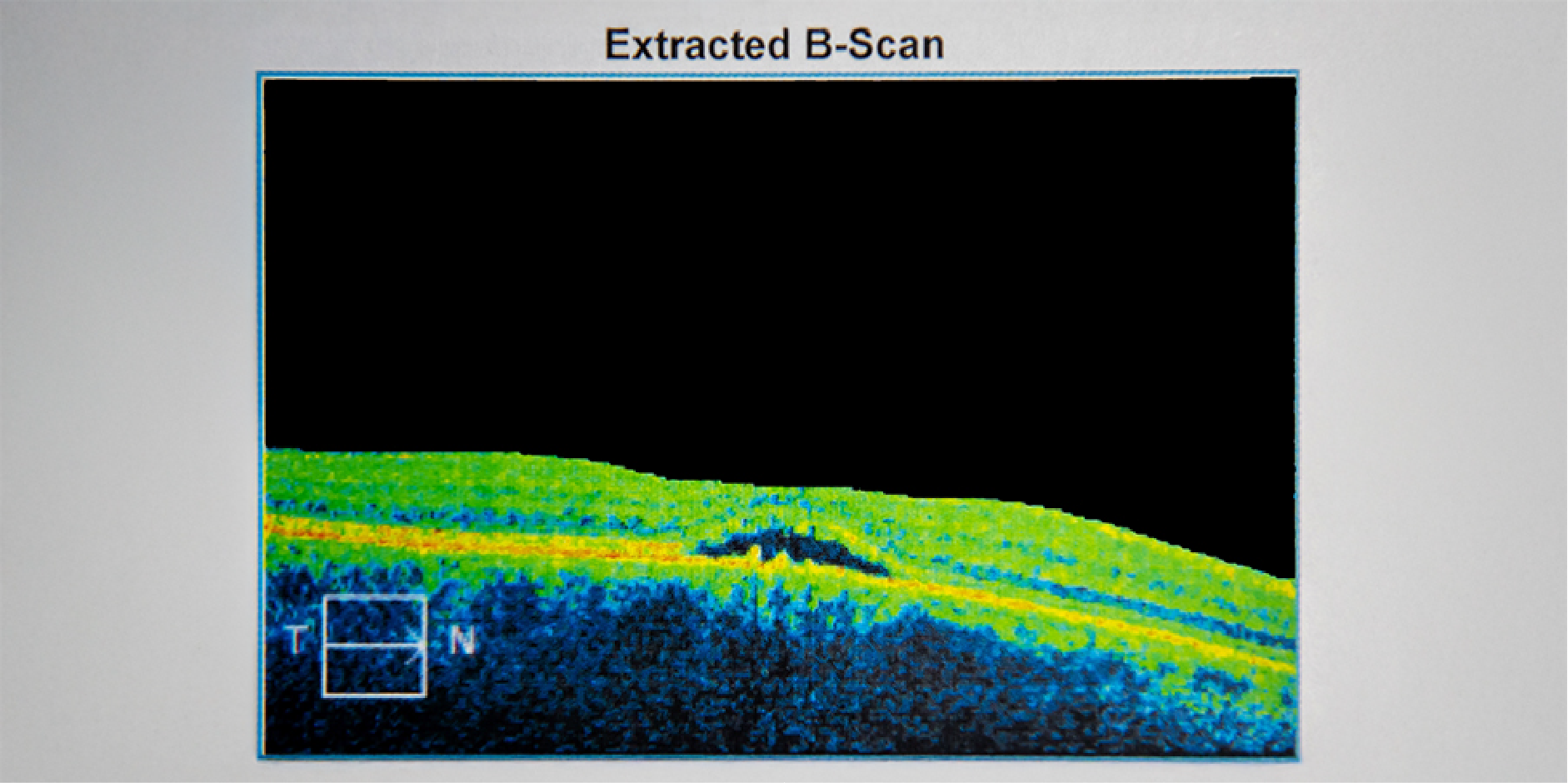Content on this page:
Content on this page:
Imaging
Retinal Imaging
Fundus
Autofluorescence
Fundus
autofluorescence helps demonstrate areas of geographic atrophy and monitor
their progression. It may be used to quantify lipofuscin in the RPE.
Fundus Fluorescein
Angiography (FFA)
Fundus fluorescein
angiography is the gold standard for diagnosing CNV and AMD as it confirms the
presence of CNV and its extent type, size, and location. It detects persistent
or recurrent CNV following treatment. It is recommended to perform when the
patient complains of new metamorphopsia with blurring of vision and/or if
physical examination reveals elevation of the RPE, or retina, macular edema,
subretinal blood, hard exudates or subretinal fibrosis, or if the optical coherence
tomography (OCT) manifests evidence of fluid. It helps to determine the cause
of visual loss that is not explained by clinical examination. It is also used
to guide the treatment using Verteporfin photodynamic therapy (PDT) or laser
photocoagulation surgery.
Fundus Photography
Once angiography is
done, color fundus photography can be done to locate the pathology of the
different tissue layers, to evaluate the sensory retina serous detachments, and
to identify the cause of the blocked fluorescence. Stereoscopic color
photographs record the appearance of the macular retina that can be used as
baseline in patients with advanced non-neovascular AMD and in the follow-up of
patients that has been treated.
Indocyanine Green
(ICG) Angiography
The alternative dye,
indocyanine green, is used to delineate choroidal vessel morphology and
circulation. It penetrates hemorrhage and RPE better than FFA. It is useful in
the assessment of specific forms of AMD such as pigment epithelium detachment
(PED), poorly defined CNV, occult CNV, and lesions including retinal
angiomatous proliferation or idiopathic PCV.
Optic Coherence
Tomography (OCT)
Optic coherence
tomography provides a cross-sectional view of the retina that can identify soft
drusen, RPE detachments, subretinal and intraretinal fluid, CNV, cystoid
macular edema, as well as the integrity of the photoreceptor and RPE layers. It
helps to distinguish the causes of visual loss that are not directly associated
with AMD (eg subtle epiretinal membrane or vitreomacular traction). It also
allows the evaluation of the RPE and photoreceptor layer to identify the
anatomic causes of metamorphopsia and visual acuity loss. It helps determine
the presence of subretinal fluid and degree of retinal thickening which are the
earliest manifestations of neovascularization. Lastly, it accurately follows
the structural changes that can be used in evaluating the retina and RPE
response to therapy.
Optical Coherence
Tomography Angiography (OCTA)
Optical coherence tomography
angiography provides non-invasive assessment of the retinal and choroidal
vasculature. It is a useful test to detect new or recurrent neovascular disease
activity and helps guide therapy.
 Age-Related Macular Degeneration_Diagnostics
Age-Related Macular Degeneration_Diagnostics